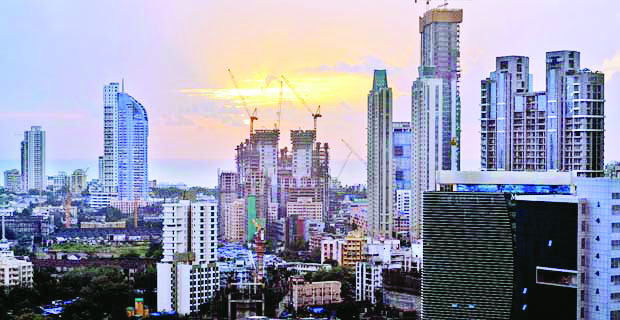Given current-day threats and challenges posed by megacities, it is crucial that the metros of today be put through an ecological sustainability assessment
A shining India and a prosperous economy bring to mind sprawling megacities replete with skyline dotted with skyscrapers amid a labyrinth of super-smooth roads and high quality residences. These aspects of the city have become showpieces for any Government to register their achievements. But seldom is the question asked: Are megacities being visualised and given shape taking into consideration the ecological sensitivities of the region and the consequences of rapid urbanisation? The cities of today are an apt example of ‘development on the go’ wherein the speed, and not the direction and cost of development, is given importance.
The megacities are only on the rise. More than half of the world’s population now lives in cities, and the number of megacities with populations of more than 10 million has risen from three in 1975 to around 20 today and still growing. As a result, the megacities of today have become the hotspots for emissions that have serious implications in air pollution and climate change. Moreover, these population hubs have caused severe strain on vital natural resources such as water and soil quality. These impacts are felt not just locally but regionally as well as globally. For this reason, the environmental impact of megacities is a phenomenon that needs to be addressed by policy-makers.
But for the policy-makers to prepare city and ecology-specific regulations, there is a need for a better scientific understanding of the exact processes at work and impact areas. This is possible only through an efficient collection of quality primary data. This can be attained by using a mix of satellite and ground-based observations and computer models with which first-hand data on urban area atmosphere can be collated. This includes essential information on reductions in air quality and health effects resulting from air pollution in megacities and ecosystem damage caused by emissions.
The Government needs to expedite a wider variety of policies which can cover and regulate the impact of the megacities on climate change as well. Emissions to the atmosphere of trace gases and aerosol species such as carbon dioxide (CO2), nitrogen oxides (NOx), and volatile organic compounds (VOCs), ammonia (NH3), sulphur dioxide (SO2) and black and organic carbon (BC, OC) are emerging as the prominent by-products of human activities in megacities. These emissions of greenhouse gases and pollutants impact both, the composition of the atmosphere and the climate. This in turn is expediting climate change and its adverse impacts.
The actual problem is that many fast-growing cities are urbanising before they get industrialised — this is changing the speed with which megacities are developing. As a result, most cities today don’t have the infrastructure, employment base or productivity to manage this rapid growth. One can see a maze of informal settlements amid completely overloaded infrastructure. Cities are generating a challenge on a resource level never seen before. The fastest growing cities may be hit the hardest eventually as these mega-hubs are fast becoming ungovernable and too unwieldy to adapt fast enough to rising temperatures, sea levels, pollution, water shortages, and ill-health of inhabitants. Megacities, once seen as the proud achievements of the modern world, now seem to be the biggest problem of the recent times.
India too specifically has been reeling under the phenomena of stratospheric rise of the megacity and the equally spectacular fall of the same. Bangalore is an apt example of this scenario. Bangalore, renowned for its trees, lakes and pleasant air only 25 years ago, is now almost a dead city that has sacrificed its environment for some of the fastest economic growth seen anywhere in the world.
The ambient temperature in the city has increased by 2 to 2.5 °C (3.6 to 4.5 °F) and now reaches 38 to 40 °C (100 to 104 °F). The water table has declined from 28 metres (92 feet) to 300 metres (984 feet) deep in places and there has been an 88 per cent decline in vegetation accompanied by a 79 per cent decline in wetlands. All this in addition to frequent flooding, even during normal rainfall. This is the price paid by Bangaloreans for city, which knew no limits on progress.
The Bangalore situation can get repeated across every Indian city. India, which is expected to be the most populous country in the world with over 1.5 billion people by 2050, is projected to see an increase in the urban population to nearly 600 million in 30 years. Megacities like Mumbai and Delhi are not expected to grow much more. Instead, smaller cities are rapidly expanding, and that too, at a cost. India’s air pollution is now as bad as China with 1.1 million people dying prematurely in 2015 alone from poor air quality linked to the hyper-development taking place in many cities.
Given these threats and challenges posed by megacities, it is now crucial more than ever that the cities of today must be put through an ecological redefinition. This alone can improve city governance and urban management, which is in consonance with the environment. The reality is that if we get the future cities wrong, the consequence will be a diminished and polluted world for everyone. The choices made today will determine whether cities are ultimately the problems or solutions.
(The writer is an environmental journalist)


























